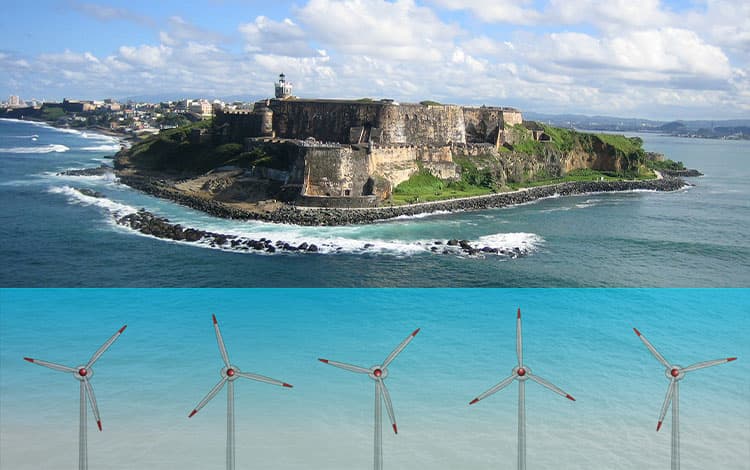Vieques, Puerto Rico is a storm-torn island. Electric lines hang everywhere. Everything seemingly ravaged. And yet, on the island sits a one-story center that has cool air, refrigerators; it houses medications and other much-needed supplies. The roof boasts Tesla photovoltaic solar panels. But what you may not see is that there's a diesel generator out back growling away.
Weeks after Irma destroyed Puerto Rico's infrastructure, Tesla equipped a Vieques senior center with its solar panels and batteries. The premise seemed quite simple and incredibly promising for an island that had lost so much. However, when workers hooked the panels up to the existing wiring, the batteries blew out.
Vieques was supposed to serve as a model; this would be where Tesla would show that Puerto Rico no longer had to be reliant upon fossil fuels for instance. So what went so wrong? Some say lack of planning and foresight, others cite a massive amount of regulatory red tape. What's going on in Vieques today? The island is still dependent on power from the mainland and Tesla's solar panels largely sit defunct.
Many experts are saying that the example of Vieques shows the harm that could come from relying upon corporations to bail out problem-plagued regions. Vieques also represents the issues that Puerto Rico as a whole face while trying to convert electrical systems to renewable energy.
A Hopeful Solution
Workers from Tesla came to Puerto Rico in 2017 following Hurricane Maria. The company had sent a proposal to the government outlining the implementation of solar-powered grids on both Vieques and Culebra. This would lessen their reliance on the region's main grid. Tesla at the time was also in talks to buy public land to build a microgrid. A formal proposal, however, was never submitted.
Vieques offered a chance to help the struggling territory and also serve as a test case that could potentially reinvigorate this blacked-out island. Tesla installed its equipment in a hospital, a daycare, senior centers, among other such locations throughout the island.
At first, the efforts to restore power seemed to be working. Tesla's people were good at convincing the residents of the island that their work there would improve the quality of life. Given how ravaged the island was following the massive storms, seeing such progress was indeed impressive. But as far as larger, more permanent changes—that was a different story.
Problems soon arose. At a water treatment plant, the batteries just sat there. Solar panels were noted to be overgrown with weeds, some shattered by horse hooves. And yet, all the while Elon Musk was earning high praise for his philanthropic efforts to help the island.
Tesla's goal was to establish a comprehensive microgrid which would increasingly make Puerto Rico able to run off of renewable energy. But the problem after problem kept cropping up. Regulations, for one, became difficult to navigate. The Puerto Rico Electric Power Authority (run by the state/) had a monopoly. So that was certainly a hurdle. Not to mention, the power grid itself had been neglected for years and thus integrating new technologies proved nearly impossible in some circumstances.
There have been a few regulatory changes over the past year, which may make it simpler to look into renewable energy for Puerto Rico. Rules easing the way for microgrids will help. And breaking up PREPA's monopoly by legalizing smaller energy coops will also factor heavily into revamping the current state of affairs.
A Problem Plagued Solution
But these are just first steps. Only about 2% of Puerto Rico's power came from renewable energy last year—even though an existing law deems that it needs to be twelve percent. Not to mention, as with the example of Tesla and Vieques, you can build out solar panel systems and battery farms, but the maintenance is everything.
Just look at the decaying and busted solar panels in Vieques and one can quickly see that they are doing nothing and thus only costing the region more so than helping it. Many have come to call the situation in Vieques a "solar graveyard."
This is not a new problem sadly. Numerous companies have tried to help underdeveloped areas by bringing in solar energy and photovoltaic panels only to leave them neglected. They fall into a state of disrepair and the local reps struggle to keep them working. The companies' intentions may be altruistic, but the execution is greatly flawed.
One solution: companies such as Tesla who work to install these systems also need to put aside money to maintain them at the local level. Additionally, they need to train those who stay behind when it comes to maintenance. There needs to be a comprehensive project management system put in place so that these projects don't turn into solar graveyards.
Many feel that when a private company comes in and installs solar panels, for example, there's an overall lack of community engagement. New models hope to involve members of the community and thus ensure that these projects get off the ground and stay active and functioning. A more community-centered model also helps prevent against rate shakedowns as well as setting a standard for long terms contracts that have maintenance plans worked into those terms. Plenty of companies, upon first trying to help following a natural disaster such as Irma and Maria, tend to rush in, apply a quick fix and then leave just as quickly with little concern for the aftermath. This without question needs to change.
This seems to be a pattern with Tesla. Their ambitions don't quite match their capacity. It remains to be seen what happens exactly in Vieques and with Puerto Rico in general as they strive to move toward greater dependence on renewable energies. Most residents though are quick to agree that change needs to be enacted and there absolutely has to be follow-through.
If your business is in need of capital this is where First Union Lending comes in. Talk to us today and we can discuss your options!
